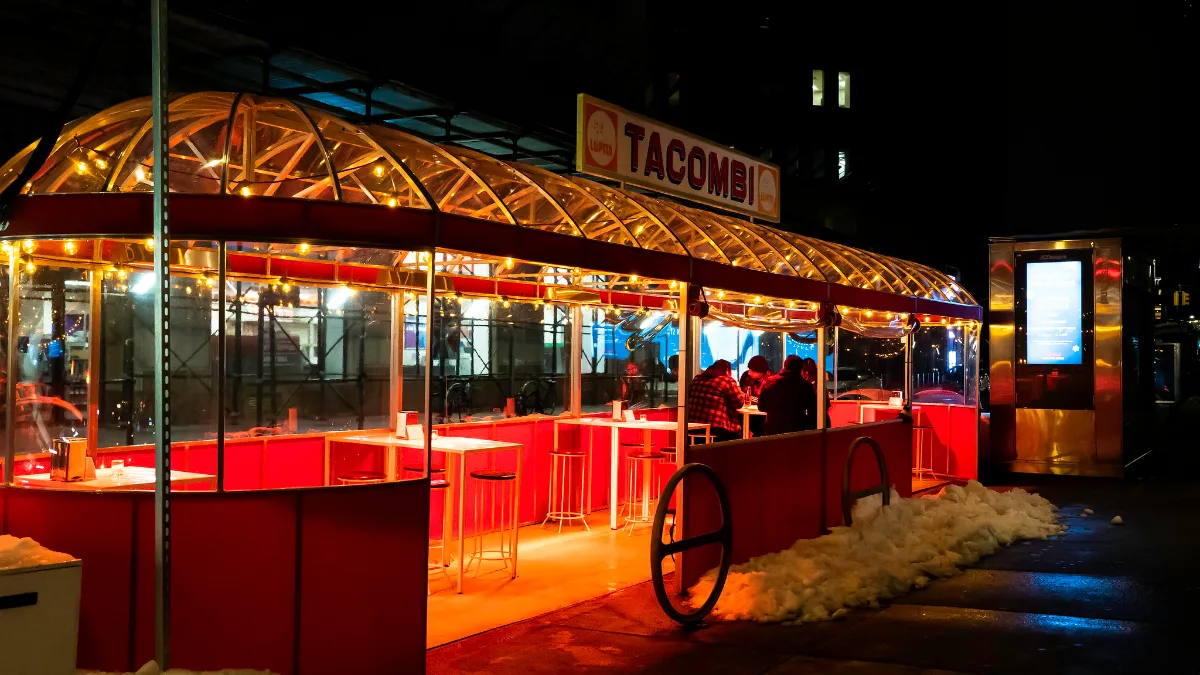Dive Brief:
- The National Restaurant Association estimates foodservice sales will increase 11% in 2021 to $731 billion, according to its 2021 State of the Restaurant Industry Report. While restaurant industry sales will grow this year, they will still come in about 15% below 2019 sales.
- Foodservice industry sales were down about 24% in 2020 to $659 billion compared to $864 billion in 2019, according to the association. Sales at bars and taverns were down 65%, the most of any segment, while full-service sales decreased 30%.
- The association states that there is still pent-up demand for dining out, and suggests that restaurants focus on catering to diners that are visiting establishments for both on- and off-premise occasions rather than try to appeal to all consumers.
Dive Insight:
Roughly half of adults surveyed by the NRA said they plan to dine-in at a restaurant or fast food joint in the coming months, if those options are available. Gen-Zers are among the most willing to dine in, with 53% saying they plan to do so, while 80% of Gen-Xers and 81% of Baby Boomers said they plan to order food for off-premise. This demographic breakdown shows the evolution of diner behavior over the last year. Prior to the pandemic, Gen-Z had a greater proclivity to order delivery or takeout than dine in.
Pent-up demand to eat on-premise remains high across the board, with 67% of consumers surveyed between Dec. 4-6 saying they are not using restaurants as much as they want. While that percentage is smaller than the 83% of pent-up demand in late April, it still shows a strong desire to go out to eat. Consumers are also getting more acclimated to ordering takeout and delivery, with the number of people who said they are not ordering for off-premise as much as they would like declining from 52% in late April to 33% in early December.
"Restaurants are the cornerstone of our communities, and our research shows a clear consumer desire to enjoy restaurants on-premises more than they have been able to during the pandemic. We've also found that even as the vaccine becomes more available and more social occasions return to restaurants, consumers will continue to desire expanded off-premises options going forward. Both will continue to be key for industry growth," Hudson Riehle, senior vice president of the research and knowledge group at the National Restaurant Association, said in a press release.
Another sign of recovery is the amount of restaurant openings in 2020 reported by Yelp, which were down 16% compared to 2019. Restaurants and food business owners opened 18,207 units nationwide during Q4 2020, down 4% from the year-ago quarter, according to Yelp. But these openings may not be enough to recover the more than 110,000 restaurants lost last year.
A majority of restaurants that closed last year were mainstays in their communities, with many in business on average for 16 years, and 16% of them had been open for at least 30 years, according to the NRA. Places like the 157-year-old Cliff House in San Francisco, the 147-year-old The Paris Cafe in New York and the 99-year-old Pacific Dining Car in Los Angeles are among some of the longest running restaurants to close permanently last year.
Despite these closures, consumers say they will come back, with 88% reporting they enjoy going to restaurants and 85% saying restaurants provides a place to socialize and is a better use of leisure time than than cooking and cleaning up, according to NRA data.
"With more than half of adults saying that restaurants are an essential part of their lifestyle, we are confident that, with time, the industry is positioned for successful recovery," Riehle said.










